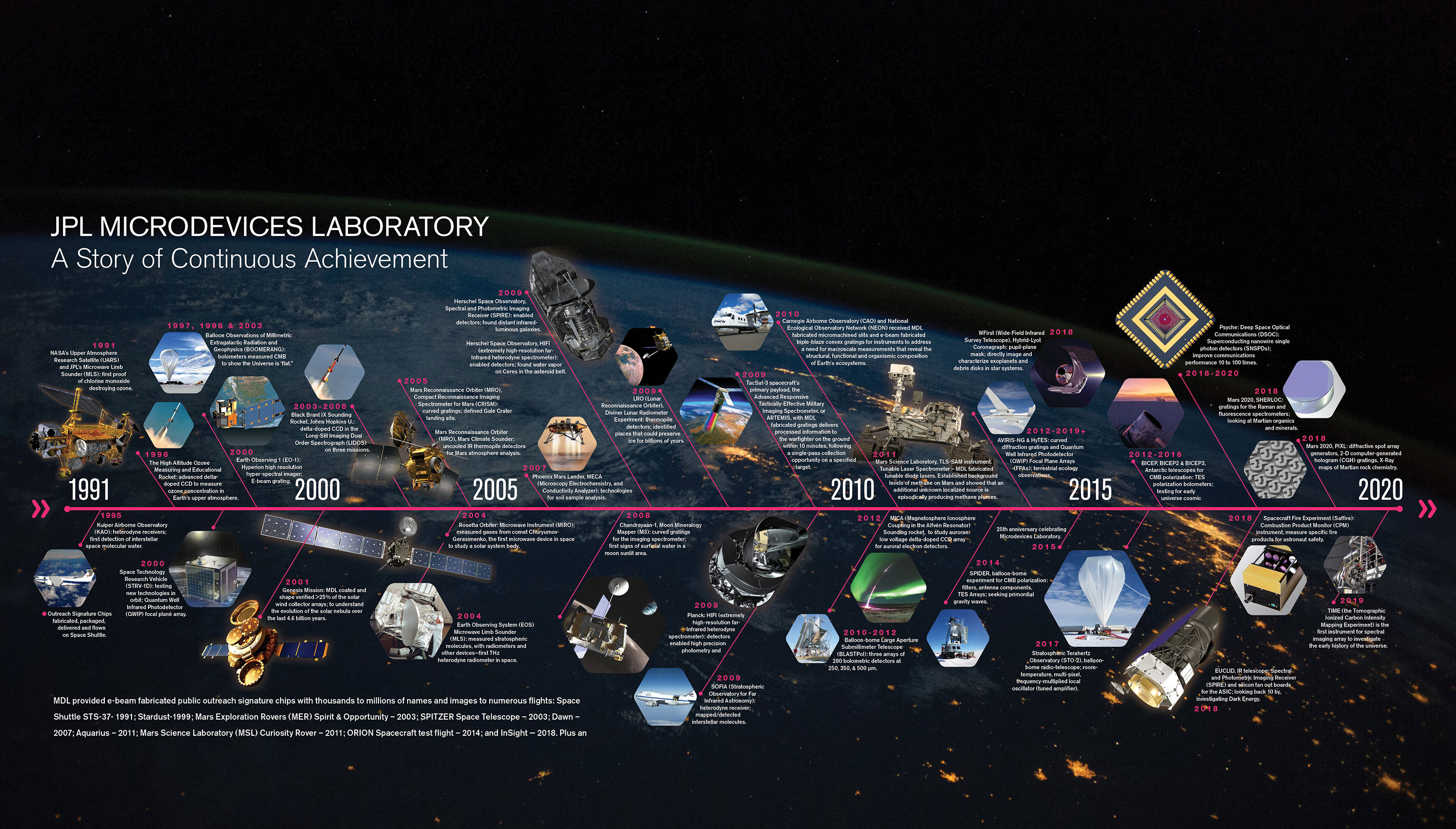
HOME
JPL Microdevices Laboratory
In 1990, within a year of its start, MDL was producing innovative solutions to the challenges presented by NASA mission requirements. Not only did it meet immediate demands, but its many world-class scientists, engineers and technicians undertook research to develop new approaches, in many cases, disruptive technologies. These advances enabled achievement of previously unattainable scientific goals. The MDL staff continue as they did before.